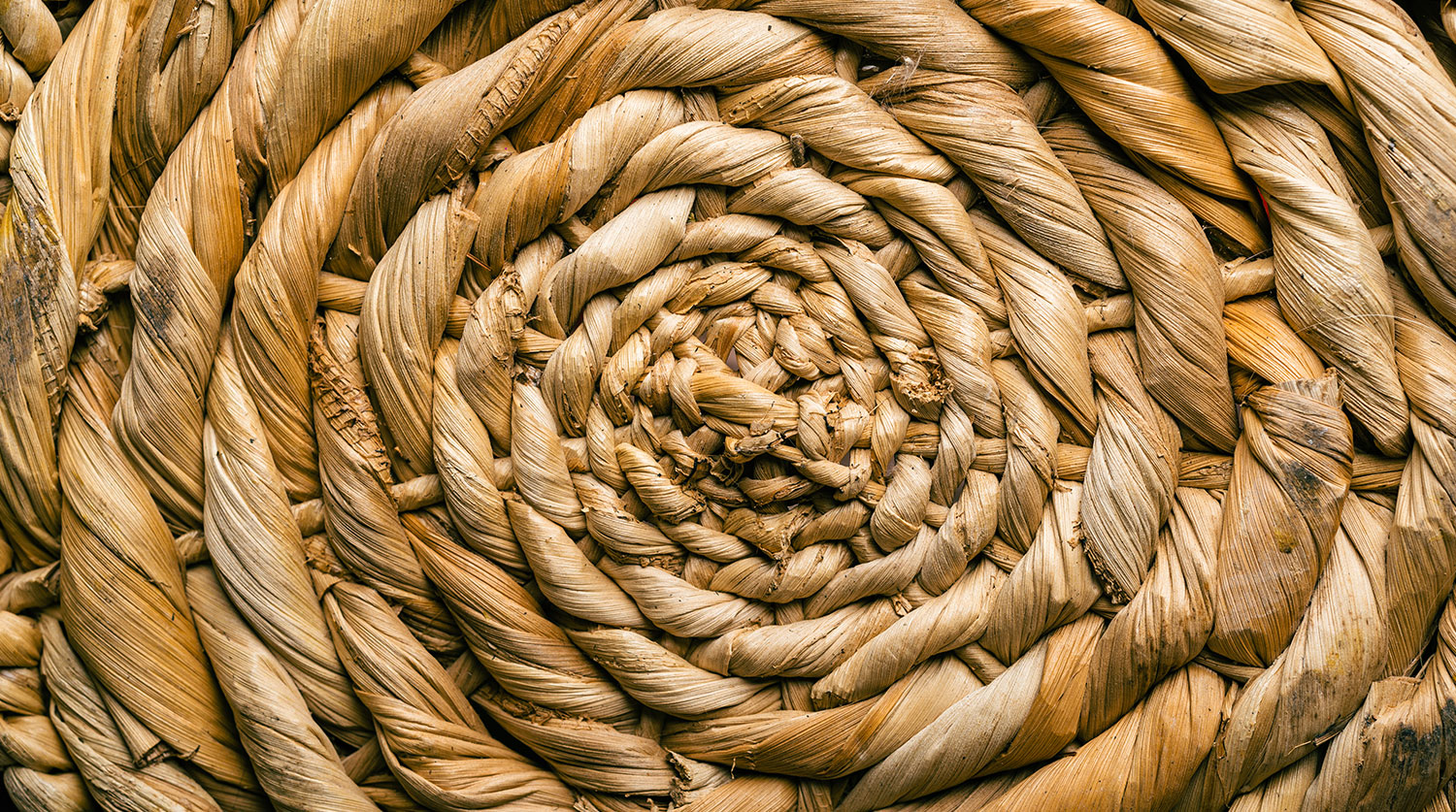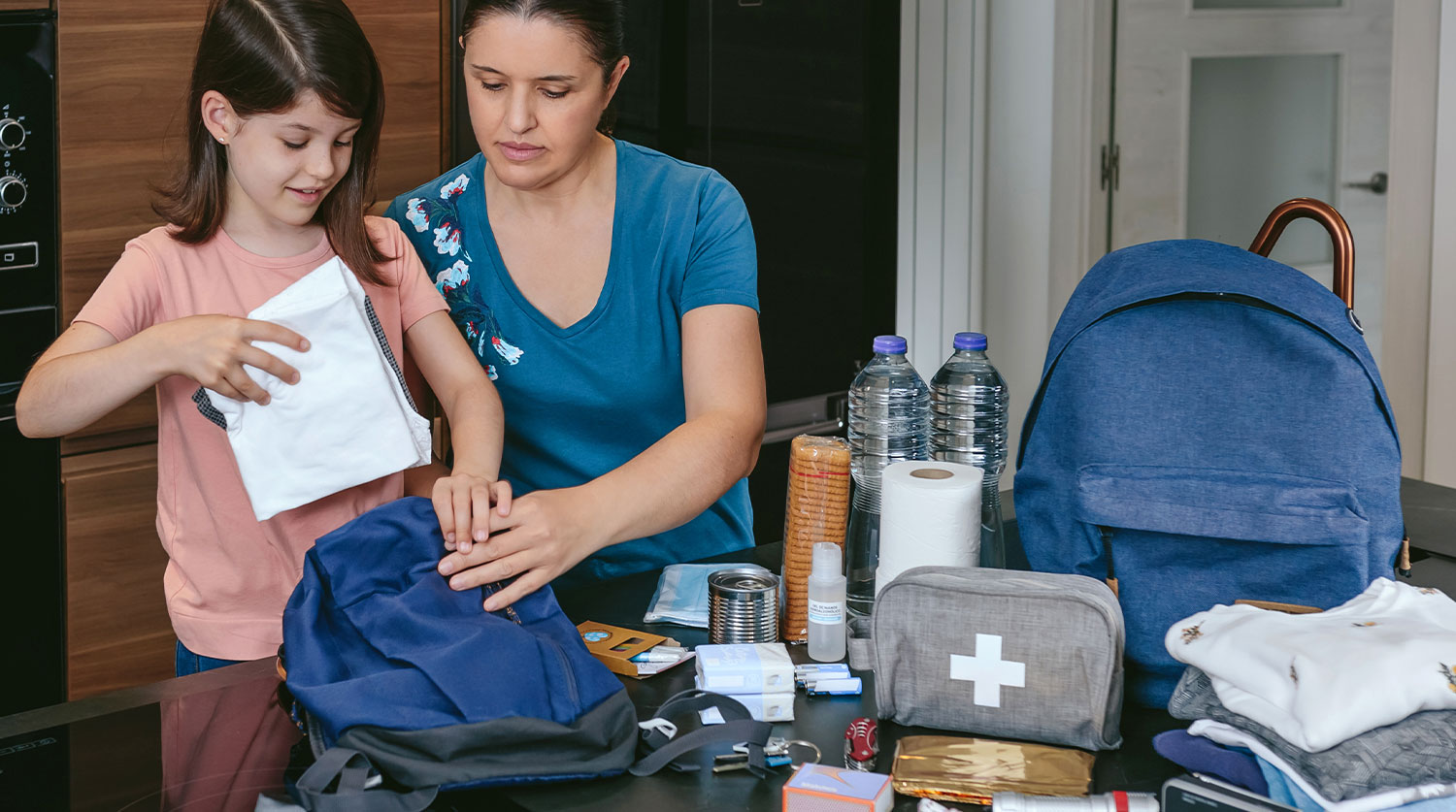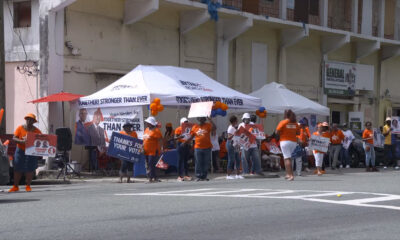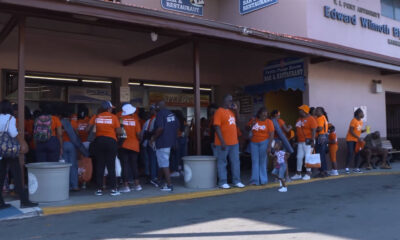Uncategorized
Traditional Art Forms and Their Significance in USVI

Traditional art forms in the U.S. Virgin Islands are integral to preserving the rich cultural heritage of the region. These art forms not only reflect the islands’ historical narratives but also foster a sense of community and identity among its residents. In the face of modernization and globalization, the significance of maintaining and promoting these traditions has become more crucial than ever.
The Rich Tapestry of USVI Traditional Arts
Traditional arts in the USVI encompass a wide array of forms, including music, dance, crafts, and visual arts. Each of these art forms tells a unique story, encapsulating the history, struggles, and triumphs of the island communities.
1. Music and Dance: Music and dance are pivotal in the cultural expression of the USVI. Genres such as Quelbe, the official music of the Virgin Islands, and traditional dances like the Quadrille, are not only entertainment forms but also vehicles of historical storytelling. These performances often depict tales of colonial resistance and the everyday lives of the islanders, passed down through generations.
2. Crafts and Visual Arts: The islands are known for their intricate basket weaving, pottery, and vibrant paintings. These crafts often use locally sourced materials, such as the fronds of the Tyre palm for basket weaving. Artisans in the USVI create pieces that are both functional and decorative, serving as a testament to the resourcefulness and creativity of the island communities.
Cultural Significance and Preservation
The cultural significance of traditional arts in the USVI is profound. These art forms act as a bridge between the past and the present, maintaining a connection to the ancestors and their ways of life. They embody the islands’ cultural memory and serve as a source of pride and identity for the residents.
Traditional arts are also pivotal in the cultural education of younger generations. Through these art forms, young people learn about their heritage and the values embedded within their community’s traditions. This education fosters a sense of belonging and responsibility to preserve these practices for future generations.
Challenges and Preservation Efforts
Despite their cultural importance, traditional arts in the USVI face several challenges. Globalization and the influx of mass-produced goods threaten the survival of traditional crafts. Additionally, the younger generation’s shift towards more lucrative careers often results in a decline in the number of artisans practicing these crafts.
To combat these challenges, various initiatives have been launched to preserve and promote traditional arts in the USVI. Educational programs and workshops are instrumental in teaching these art forms to new generations. Local festivals and cultural events provide platforms for artisans to showcase their work, thus keeping the traditions alive and vibrant.
Technology also plays a significant role in preservation efforts. Digitization projects create virtual archives of traditional art forms, ensuring their accessibility for future generations. Social media and online marketplaces offer new avenues for artisans to reach a global audience, thus sustaining their livelihoods and promoting cultural exchange.
The Future of Traditional Arts in the USVI
The future of traditional arts in the USVI is a blend of preservation and innovation. While it is crucial to maintain the authenticity of these art forms, there is also room for contemporary interpretations that can make them more relevant to today’s audience. Younger artists are increasingly blending traditional techniques with modern elements, creating a dynamic fusion that respects the past while embracing the present.
Engaging the youth in these practices through active participation and providing them with platforms to express their creativity is essential. By doing so, the USVI ensures that its rich cultural heritage continues to thrive, fostering a deeper appreciation for the islands’ unique identity.
In conclusion, the traditional art forms of the USVI are not just artistic expressions but are vital to the cultural fabric of the islands. Their preservation is imperative for maintaining the islands’ historical legacy and cultural identity. Through concerted efforts in education, community engagement, and the innovative use of technology, the USVI can continue to celebrate and uphold the timeless beauty and significance of its traditional arts.
For more detailed insights, you can refer to sources such as Dolapo Obat’s article on cultural heritage preservation and the Artistry Found website for contemporary perspectives on traditional arts.
Uncategorized
The Future of Sustainable Fishing in the Virgin Islands

Sustainable fishing practices are increasingly becoming a focal point in the Virgin Islands, as the region works to balance the economic importance of its fisheries with the need to preserve marine ecosystems. With the ocean playing a critical role in both the livelihoods of local fishermen and the health of the islands’ biodiversity, sustainable fishing is seen as the way forward to ensure long-term environmental and economic stability.
The Importance of Fisheries to the Virgin Islands Economy
Fishing has long been an essential part of the Virgin Islands’ culture and economy. Local fishermen rely on the ocean for their livelihoods, providing fresh seafood to restaurants, markets, and hotels. Tourism, which is the backbone of the Virgin Islands economy, also benefits from a thriving fishing industry, as many tourists are drawn to the islands’ rich marine life and the promise of fresh, locally sourced seafood.
However, overfishing and the use of unsustainable practices have put increasing pressure on fish populations in the region. Species such as grouper, snapper, and lobster are showing signs of decline, raising concerns among environmentalists and policymakers alike. These issues make it clear that new, more sustainable methods of fishing must be implemented to protect both the environment and the local economy.
Current Efforts Toward Sustainability
In recent years, the Virgin Islands government, along with various environmental organizations, has taken significant steps to promote sustainable fishing. Regulations such as catch limits, seasonal closures, and gear restrictions have been introduced to help mitigate overfishing. For instance, the Virgin Islands has established protected areas known as Marine Protected Areas (MPAs), where fishing is either restricted or entirely prohibited, allowing fish populations to recover and ecosystems to thrive.
Additionally, the introduction of sustainable fishing education programs for local fishermen has been crucial. These programs emphasize the importance of selective fishing methods, which target specific species without harming others, as well as the use of non-destructive gear that minimizes damage to the marine environment. Fishermen who adopt these practices not only contribute to conservation efforts but also benefit from more abundant fish stocks in the long run.
The Role of Technology in Sustainable Fishing
Technology is also playing an important role in shaping the future of sustainable fishing in the Virgin Islands. Tools like GPS tracking, electronic logbooks, and advanced sonar systems allow fishermen to better track fish populations and avoid overfishing specific areas. This data-driven approach helps ensure that fishing efforts are sustainable, protecting the species most at risk while maximizing the efficiency of the catch.
Moreover, technology is enabling more effective monitoring and enforcement of fishing regulations. Drones and satellite technology are now being used to patrol the waters and ensure compliance with protected area restrictions, reducing illegal fishing activities that threaten marine ecosystems.
Community Involvement and Education
Sustainable fishing in the Virgin Islands cannot succeed without the support and active involvement of the local community. Educating both fishermen and the general public about the importance of sustainable practices is crucial. Public awareness campaigns highlighting the long-term benefits of conservation, such as increased fish stocks and healthier reefs, can encourage local support for stricter regulations.
Furthermore, the involvement of local schools and universities in marine conservation research fosters a greater understanding of the challenges facing the region’s fisheries. This collaboration ensures that the next generation of Virgin Islanders is equipped with the knowledge and tools needed to continue protecting their valuable marine resources.
The Path Forward
While the Virgin Islands has made significant progress toward sustainable fishing, there is still much work to be done. Strengthening partnerships between government agencies, environmental organizations, and the local fishing community will be key to ensuring the long-term success of these efforts. Continued investment in technology, stricter enforcement of regulations, and ongoing education programs are essential components of this future.
Moreover, as climate change continues to impact ocean ecosystems, sustainable fishing practices must also adapt. Rising sea temperatures and ocean acidification are already affecting fish populations, and future sustainability efforts will need to take these environmental shifts into account.
In conclusion, the future of sustainable fishing in the Virgin Islands lies in a combination of regulation, education, technology, and community involvement. By prioritizing the health of marine ecosystems today, the Virgin Islands can ensure that its fishing industry remains viable and productive for generations to come. Sustainable fishing is not just an environmental necessity—it is also an economic imperative for the islands’ future.
Uncategorized
Emergency Weather Kits: What to Include

Living in the U.S. Virgin Islands means enjoying stunning views and tropical weather, but it also requires being prepared for the potential dangers posed by hurricanes and tropical storms. When disaster strikes, having an emergency weather kit on hand can make all the difference in keeping your family safe and comfortable. This guide will help you assemble a well-stocked emergency kit tailored for residents of the Virgin Islands, ensuring you’re ready for any severe weather event.
Why You Need an Emergency Weather Kit
Hurricane season in the Caribbean, which runs from June through November, often brings storms that can disrupt daily life, leaving residents without power, water, or access to stores for days, even weeks. In these situations, an emergency weather kit becomes your lifeline. It provides essential supplies that help you survive until normal conditions return.
The key to an effective emergency kit is proper planning and preparation. Start building your kit now, so when the next storm approaches, you’ll be ready.
Essential Items to Include in Your Emergency Weather Kit
- Water
Clean drinking water is critical during emergencies. Plan for at least one gallon of water per person, per day, for at least five to seven days. Water is not only needed for drinking but also for sanitation and hygiene. - Non-Perishable Food
Stock up on enough non-perishable food for at least one week. Consider items like canned goods, dry cereals, peanut butter, granola bars, and high-energy snacks. Don’t forget a manual can opener to access your canned goods easily. For infants, ensure you have enough formula or baby food. - First-Aid Kit
A fully stocked first-aid kit is vital during emergencies, especially if medical help is delayed. Include bandages, antiseptics, scissors, tweezers, pain relievers, and any prescription medications your family may require. - Flashlights and Batteries
Power outages are common during storms. Keep a good supply of flashlights and extra batteries in your kit. Avoid candles as they pose a fire hazard, especially in stormy conditions. - Portable Radio
A battery-powered or hand-crank radio is essential for receiving important updates during an emergency, including weather alerts and evacuation orders. NOAA weather radios are designed to receive specific storm alerts and are a good investment for island residents. - Emergency Tools
Include basic tools like a wrench or pliers to turn off utilities, such as water or gas, in case of a leak. Multi-tools are also useful in emergencies due to their versatility. - Personal Hygiene Items
Maintaining hygiene is crucial during long power outages. Stock up on items like soap, hand sanitizer, moist towelettes, toilet paper, and garbage bags for sanitation purposes. - Clothing and Bedding
Include sturdy clothing, rain gear, and sturdy shoes for each family member. Also, pack blankets, sleeping bags, or extra bedding to stay warm in case the weather turns cooler. - Important Documents
Keep copies of important documents like passports, birth certificates, insurance policies, and medical records in a waterproof container. These documents may be needed during or after an emergency, especially if you need to evacuate or apply for aid. - Cash
ATMs may not be operational during power outages, so it’s smart to have small bills on hand to purchase essential items once the storm passes. - Special Needs Supplies
If you or a family member has special needs, such as mobility challenges or requires medical devices, make sure your kit includes appropriate supplies and backups, like extra hearing aid batteries, medications, or medical devices. - Pet Care Items
Don’t forget your pets! Stock food, water, and any medications your pets may need. You’ll also need items like a leash, collar, pet carrier, and sanitation materials.
Additional Recommendations for U.S. Virgin Islands Residents
Being on an island, the risk of supply chain disruptions is higher after a storm, so over-prepare where possible. Additionally, you may want to consider adding tarps, ropes, and plywood to your emergency kit to help secure your home if damage occurs during the storm. Have a plan in place for protecting windows and doors in the lead-up to a hurricane.
Emergency Weather Kit Storage Tips
Keep your emergency kit in a designated area that is easily accessible in case of a sudden evacuation. If possible, store items in airtight plastic bins to protect them from water damage. Review and update your kit regularly, checking expiration dates on food, batteries, and medications at least once a year.
Be Prepared Year-Round
Storm preparedness isn’t just for hurricane season—having an emergency weather kit ready year-round ensures you’re equipped for any disaster, from earthquakes to extended power outages. Begin building your kit today and stay vigilant about updates and improvements to it. Your safety and the safety of your family depend on your preparation.
As residents of the U.S. Virgin Islands, it’s important to be proactive in preparing for weather-related emergencies. A well-stocked emergency kit can provide peace of mind and help you navigate the aftermath of a storm. With careful planning and the right supplies, you’ll be ready to face any challenge Mother Nature brings.
By following these guidelines, you’ll not only protect your family but also contribute to a more resilient community.
Uncategorized
Exploring USVI’s Folk Music Traditions

The U.S. Virgin Islands boasts a rich tapestry of cultural heritage, and at the heart of this vibrant culture lies its folk music traditions. Deeply rooted in African, European, and Caribbean influences, the folk music of the USVI offers a compelling glimpse into the islands’ history, community life, and spiritual practices. From the rhythmic beats of the quelbe to the soul-stirring melodies of the bamboula, these musical traditions continue to resonate with both locals and visitors, offering a unique cultural experience that is both educational and entertaining.
Quelbe: The Heartbeat of the Virgin Islands
One of the most iconic forms of folk music in the USVI is quelbe, also known as “scratch band” music. This genre is recognized as the official music of the Virgin Islands and is characterized by its use of improvised instruments, such as gourds, washboards, and conch shells. The term “scratch band” refers to the way musicians often create rhythms by “scratching” or rubbing these instruments together.
Quelbe music emerged in the 17th and 18th centuries as a form of storytelling and social commentary. It was used by enslaved Africans to convey messages, share news, and express their emotions in a time when literacy was rare among the population. The lyrics of quelbe songs often touch on themes of love, hardship, resistance, and community, making them a powerful medium for preserving the history and values of the Virgin Islands.
Today, quelbe remains a vital part of the islands’ cultural identity. It is performed at festivals, parades, and community events, where both young and old can enjoy and participate in this lively tradition. The St. Croix-based band Stanley and the Ten Sleepless Knights is one of the most famous groups keeping the quelbe tradition alive, ensuring that this unique genre continues to thrive in modern times.
Bamboula: A Dance of Resilience
Another significant element of USVI’s folk music tradition is the bamboula, a drum-driven genre that is closely linked to African spiritual practices. The bamboula drum, made from the hollowed-out trunk of a tree and covered with goat skin, produces deep, resonant tones that are central to the music’s hypnotic rhythms.
Bamboula music is often accompanied by a dance of the same name, which features intricate footwork and expressive body movements. The dance was historically performed during celebrations, religious ceremonies, and times of resistance, serving as a powerful form of expression and communication among enslaved Africans. Today, bamboula is celebrated as a symbol of resilience and cultural pride, with performances often held during Emancipation Day celebrations and other cultural festivals across the Virgin Islands.
Cariso: The Oral Tradition
Cariso is another integral part of the Virgin Islands’ folk music landscape. This traditional form of call-and-response singing was used by enslaved Africans to pass down stories, legends, and moral lessons from one generation to the next. The lyrics of cariso songs are often laced with humor, satire, and social critique, providing insight into the daily lives and struggles of the people.
While cariso is less commonly performed today, it remains an important cultural artifact that is preserved through oral history and community events. Efforts to revive and document cariso are ongoing, with cultural organizations in the Virgin Islands working to ensure that this rich tradition is not lost to time.
Preserving and Promoting Folk Music in the USVI
The preservation and promotion of folk music traditions in the USVI are crucial for maintaining the islands’ cultural heritage. Organizations such as the Virgin Islands Council on the Arts and the Smithsonian Folklife Festival have played significant roles in documenting and sharing these musical traditions with wider audiences. Local schools also incorporate folk music into their curricula, teaching younger generations about the importance of these cultural expressions.
In recent years, there has been a resurgence of interest in USVI folk music, driven by both local musicians and international collaborations. Festivals like the St. Thomas Carnival and the St. Croix Christmas Festival often feature performances of quelbe, bamboula, and cariso, allowing visitors to experience the rich musical heritage of the islands firsthand.
The folk music traditions of the U.S. Virgin Islands are more than just entertainment; they are a living testament to the resilience, creativity, and cultural richness of the islands’ people. Whether through the rhythmic storytelling of quelbe, the powerful drumming of bamboula, or the poignant lyrics of cariso, these musical forms continue to shape the cultural landscape of the USVI. By supporting and preserving these traditions, the Virgin Islands ensure that their unique cultural heritage remains vibrant for generations to come.
-

 Education1 year ago
Education1 year agoEducation Board Seeks Input on Schools Through Comprehensive Survey
-

 Education2 years ago
Education2 years agoCTE Board Enthusiastic About New Curriculum Standards, Yet Anxious Over Apprenticeship Support
-

 Crime2 years ago
Crime2 years agoRegistered Sex Offender Detained for Illegal Firearm Possession During Annual Surveillance Drive
-

 Videos3 years ago
Videos3 years ago2022 Gubernatorial Election: Voters Speak Out
-

 Development1 year ago
Development1 year agoCosts Surge as Donoe Estates Housing Project Resumes with New Contractor
-

 Videos3 years ago
Videos3 years agoGubernatorial Teams Celebrate St. Croix’s Bull & Bread Day
-

 Videos3 years ago
Videos3 years agoWakanda’s Female Might: A Dive into ‘Black Panther: Wakanda Forever’
-

 Crime2 years ago
Crime2 years agoSt. John’s Westin Resort Scene of Armed Robbery, Prompting Heightened Police Vigilance




